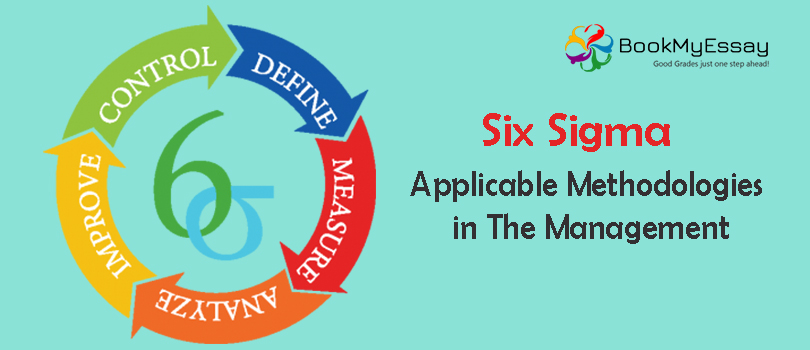In the previous blog post” What Is Six Sigma and How It Is Related To Quality Management”, we have learned about the origin, definition, principles and role of the Six Sigma in the quality management. That was just the beginning, there are a majority of things students need to learn about the Six Sigma. Although they can easily hire Six Sigma assignment help from the reputed academic writing service provider like BookMyEssay to the method the methodologies in their subject related assignment, it is always beneficial to learn from the core. The below blog post is all about applicable methodologies of the Six Sigma. So, let start digging some information without wasting a moment.
Related Post: What is Six Sigma and How it is Related to Quality Management The Beginning of the Six SigmaThe Six Sigma process was originated in the 90s with the bell curve developed by Carl Fredrick Grauss. In a year, 1920 the statistician Carl She whart showed that process requires some corrections here and there. Moving forward to 1970 when the senior executive of the Motorola complained about the lack of quality in the products according to the ‘Six Sigma’. Later the many start taking Six Sigma as the standard of quality.
Hire academic report writing help to know more about the Six Sigma.Methodologies of Six Sigma
There are basically two types of methodologies known as DMAIC and DMADV. Six Sigma DMAIC This sub-methodology of the Six Sigma is driven by the data with an objective to improve the existing procedure or processes. The methodology includes five phases, here each phase represents the letter in the DMAIC. These phrases include: Define: - Define the problem you are facing, the customers you are targeting, project requirements you need to fulfil and ultimate goals and expectations of the customers. Measure: - Measure the performance of the existing procedure and process through the data collection process to discover the loopholes and defects. Analyse: - Analyse the cause of the defects and variations to determine the issues with the current procedure or processes that stand as hurdles on the path of success. Improve: - Work to improve the process by eliminating the deficits of the procedure and processes through innovative solutions. Control: - Control the process to avoid any previous mistakes and ensure the process is on the right track.Six Sigma DMADV
Similar to Six Sigma DMAIC, DMADV was also known as design for the Six Sigma also includes five phrases: Define: - Define the practical goals that go well with the requirements of the customers. Measure: - Measure the quality critical to customer’s requirements and convert them into realistic project goals. Analyse: - Analyse the current options and alternatives for the target customer along with estimated life cycle of the product. Design: - Design the overall process at the high level before getting into detailed information that will serve as a prototype Verify: - Take time to verify the final iteration of the product is approved by all clients and customers.DMAIC and DMADV
Both DMAIC and DMADV may look similar but, in reality, they are different from each other and have different use cases. DMAIC Methodology is designed for the current ongoing process or products that are failing to meet the customer’s needs. Whereas, when a business requires to develop a brand new product but fails to meet the requirement it needs DMADV. Students can hire Academic Writing Service from BookMyEssay to write the assignment.






 3 Bellbridge Dr, Hoppers Crossing, Melbourne VIC 3029
3 Bellbridge Dr, Hoppers Crossing, Melbourne VIC 3029



